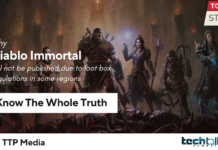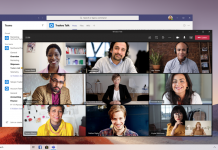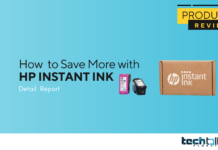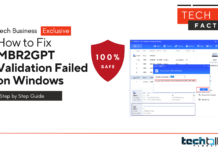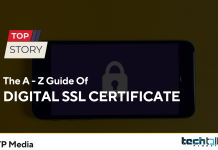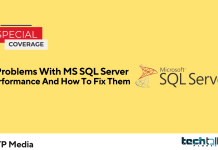An enterprise application, also known as an application software, is a computer software for running a specific business. It automates and streamlines business processes, improves efficiency and productivity, unifies data and goes further.
Application development itself refers to software application development. This process involves creating apps that are designed to solve a business problem or consumer need. Applications are developed for many different industries, allowing them to stay relevant and meet customer expectations.
When application development is concerned, there are two ways to deliver it: in-house and outsourcing. There are two types of software development teams that can develop applications: in-house and outsourced. An in-house team includes core developers, a project manager, stakeholders, designers, and quality assurance testers. An outsourced team is composed of freelancers, agencies, and full-stack developers.
What Is The App Development Process?
App development is a process that starts with an idea and ends with a product that someone can use. It can be a lot of work, but with the right tools and guidance, it can be a fun and rewarding experience.
The app development process starts with an idea. This idea might come from someone inside or outside of the company, and it might be for a new product or an updated version of an existing product.
Once the idea is approved, the next step is to come up with a plan. This plan will outline the steps needed to bring the idea to reality, from conceptualization to development to launch.
Next, the team will start developing the idea. This can involve creating a prototype or testing the idea in a simulated environment.
Once the idea is ready for development, the team will start creating the actual product. This involves designing the user interface, developing the code, and testing it to make sure it works as expected.
Once the product is ready, the team will launch it into the market. This involves preparing the product for release, marketing it, and monitoring feedback.
Overall, the app development process is exciting and challenging, but with the help of the right team and tools, it can be a success.
Application development is a growing industry with many advantages. Here are a few of the key points to consider.
Advantages And Disadvantages of Application Development Are Discussed In The Following Lines.
Advantages Of Application Development
Low-cost: App development can be relatively inexpensive, depending on the size and complexity of the project.
Variety: There are many different app development frameworks and tools available, so you can find the right one for the job.
Speed: Developing an app can be done quickly and with minimal fuss, depending on the framework and tools used.
Accessibility: Many app development frameworks and tools are accessible to people with disabilities.
Customizability: App development can be tailored to meet the specific needs of the project, which makes it very flexible.
Disadvantages
Insecurity: Because app development is relatively new, there is still a lot of uncertainty about the industry and its future. This can make it difficult to find reliable and trustworthy developers.
Learning curve: App development can be complex, and it may be difficult to learn the specific tools and frameworks required.
A lack of standardization: There is no one standard approach to app development, which can make it difficult to exchange information and share ideas between developers.
Hacker attacks: App development can be vulnerable to hacker attacks, which could result in data loss or other damage.
Types Of Application Development
There are types of application development. They differ in the approach, the tools needed, the duration and the support.
Web development: If you need a website, this is the way to go. You need access to a web server with PHP, MySQL, and HTML or CSS.
Mobile development: There are multiple mobile platforms these days. When you need a mobile app, you need to write the code to run on these mobile platforms.
Custom application development: This is used by big companies that need custom software. This type of application often comes as open source and is free.
Types Of Application Development Life Cycle?
This article focuses on what are the types of application life cycle? Developing an app is not a simple process. It requires a lot of skill, knowledge, and effort. In this article, we have given the information related to types of application life cycle.
A type of application life cycle can be defined as a life cycle of an application from concept to delivery. But the main question is – which type of life cycle is the best?
There are two types of life cycles, namely waterfall and agile.
The Waterfall life cycle is a very old method of managing application development. This cycle focuses on planning, designing, developing, testing, launching, and maintaining. In this life cycle, the development process is divided into different phases. Each phase is undertaken by a separate team.
The agile method of life cycle development is relatively new. It is made up of working groups and focuses on continuous development. The concept of this life cycle is that there are no fixed steps and everything is flexible. Instead, the life cycle is flexible and is tailored to the client’s requirements.
Is Application Testing Important?
An application undergoes testing to identify bugs. There are several types of testing including functional, automated, regression, and performance testing.
Functional testing- Functional testing is a subset of black-box testing and can be conducted at unit test level. Black-box tests do not involve any knowledge of the internal structure of the software under test.
Black-box testing is a type of open source testing methodology and is used to test the functionality without understanding the internal working of the software.
Black-box testing focuses on the application’s external behavior and dynamic changes.
Functional testing is test cases that exercise the application’s functionality. The test cases verify the application’s output and functionalities.
Automated testing- Automated testing is a process that is meant to make software testing easier and quicker. It also makes testing more reliable and eliminates human errors during the testing process.
Automated testing makes it easier to create and run test cases. It is also capable of generating automated tests. Automated testing can also be used on various platforms.
You can use automated testing to test both web app and mobile apps.
Regression testing- Regression Testing refers to the process of testing an application after it has been deployed into production. It is known as regression testing because it is used to test whether anything has changed in the application.
For example, if the application had a bug last year, regression testing ensures that this bug has not resurfaced.
It is the process of testing the application to ensure that the application behaves exactly the same as it was deployed into production.
The term Regression Testing is a misnomer because regression testing is not testing the application from its previous version. Instead, regression testing directly checks the functionality of the application.
Regression Testing is typically used in complex web applications or web applications where bugs are quite common.
Performance testing- Performance testing is the process where an application is tested within a limited time-frame to know if the application can perform well under a realistic environment. Performance testing is important for a mobile application as it ensures smooth performance and faster response time.
Performance testing is done using a performance testing tool. It is also known as load testing.
A performance testing tool is used to measure the performance of an application under load. It is done to get an idea of the application’s performance and determine what changes could be made to improve performance.
How To Hire An App Developer ?
When you employ an app developer, you want to have a positive experience where everyone is aware of their roles and duties and the process is cooperative and transparent. An app developer must respect and comprehend your individual business objectives and app needs because they are travelling on a trip with you.
To guarantee a fantastic customer experience working with your selected developer and the certainty of a properly designed app for your business, there are three essential steps you need to perform.
Step 1: Preserve your concept
A Non-Disclosure Agreement (NDA) should be in place and signed by both parties before you and a developer talk about your project. A legally binding agreement known as an NDA creates a confidential working relationship between you and your developer. This makes sure that private information cannot be shared with third parties and that original ideas are honoured and safeguarded.
You can get NDAs from some development businesses, or you can go to a law office and get one with all the necessary terms. You can find our NDA here if you want to work on an app development project with Enterprise Monkey.
Step 2: Establish the project’s scope
You will require a very well-defined Project Scope in order to receive an estimate and cost for the development of your app. Getting this step of the process properly is crucial since it will serve as the starting point for the entire development process and define the appearance of your finished product.
Before beginning any development work, a competent development company will take the time to discuss this with you, making sure that every function, feature, and backend requirement has been recorded.
List of potential mobile app features and functions;
- Geofencing
- Camera access
- GPS
- Online/ Offline capabilities
- Push notifications
- Integration with Augmented Reality
- Chat support
- Payment Gateway Integration
- QR scanner Integration
- High-Level Project Scope
MVP (Minimum Viable Product) (Minimum Viable Product)
Finding a minimum viable product—a condensed version of your product—during this process is a fantastic idea. It will provide you just the right amount of features to test with your beta users and launch your app as soon as feasible.
You can get feedback to determine whether the product’s features and functionality need to be adjusted by quickly releasing your MVP. By doing this, you can save money up front by investing solely in the features that your customers want to see. Additionally, you can attract more investors when they observe your product’s success and realise it is more than simply a concept on paper.
User Accounts
Rarely can a development cost be accurately estimated on the initial meeting. User stories are a quick and straightforward approach to write a scope from the user’s point of view. Examples of typical ones include:
“I want to be able to look at every choice open to me as a customer. Without logging in, I want to choose my selection and buy it. I want to be able to pay in a variety of ways, and I want my previous checkout settings to be remembered.
The developer has a thorough awareness of the various user needs for your programme thanks to the creation of these user stories.
Prototyping and wire framing
A wireframe, which is a simple map that enables you to see the user journey across the app, is created after a developer has defined the user story for your project. The prototype phase starts once the wireframing is finished and you have granted the go-ahead.
Before starting the development process, you may test how your app interacts with users and make sure the user interface (UI) has been properly created by using the prototype. It will ensure a smooth transition into the development stage of the process after the prototype has been accepted.
Step 3 – Clearly documented cost breakdown
An itemised cost breakdown of the scope, a timeframe for each stage, and a fully defined and documented description of your app’s function, features, and purpose must be obtained before you commit to constructing it.
The complexity and amount of features will affect the price. Push alerts, offline mode, GPS, video streaming, payment administration, profile setting, and editing capabilities are just a few examples of features. All of them must be listed and approved. You will be charged an hourly rate if you make changes that are outside the scope. Find out the hourly rate and how many hours a straightforward adjustment can require. Breaking the plan could be expensive.
The operating system (Apple and/or Android), third-party service connection fees, app testing and deployment expenses, and lastly continuing maintenance costs are additional significant items that need to be carefully documented and costed.
How To Hire An Application Development Agency?
There are myriads of firms offering professional application development services. Chances are that at least one of these firms will meet your requirements.
But selecting an application development agency is easier said than done. Choosing the right firm becomes a challenging task because of the difficulty posed by shortlisting a good candidate.
Many factors need to be considered when hiring an application development firm. These factors include the industry experience, cost, the existing infrastructure, and the level of productivity you would expect from the firm.
If you are planning to hire an application development firm, here are some helpful tips on how you can do this.
5 Best App Development Companies In Australia
BigRobin
https://www.bigrobin.io/
The team at DianApps Technologies has experience in the field of mobile app development and has produced apps that have led charts internationally. The firm’s knowledge, which includes the iOS and Android platforms, is targeted at small enterprises across multiple industries.
The creation of the navigational app Tripp was one of the projects undertaken by DianApps Technologies. The app has a feature that makes it simple for tourists to keep track of their trips through photos and videos.
WhatzOn
A development company called Launchpad App Development collaborates with startups and mid-market firms like One Minute Closer to create mobile applications. They quickly create adaptable systems by utilising agile development techniques. The Melbourne-based company offers full service, from digital marketing to research and development.
Making massage therapists more accessible was the task given to Launchpad App Development by a client. In response, the group created the iOS app Physits, which is available on demand. They built tools that let consumers book home visits and make massage therapy service requests.
Victoria Police / Connect Manningham App
https://www.police.vic.gov.au/
Idea Box enables brands with custom software development and boasts an extremely long list of clients that includes companies like MDI Global. The focus of this Australian company, which was founded on design-first principles, is on assisting brands in bringing about change.
One instance of Idea Box’s expertise is their work for Drive-Off Alert, a reputable brand internationally. They completely reevaluated their strategy with the aid of Idea Box in order to better target their customer base. Strong involvement and an increase in their perceived authority were the results of this.
Hitori
Melbourne, Australia-based Hitori is a digital product development company. We support cutting-edge businesses and startups in their efforts to increase efficiency, modernize antiquated systems, and create marketable apps.
We have a strong commitment to working with innovators to design and develop innovative digital platforms & apps in the enterprise, startup, and healthtech space; typically with custom designed REST API’s, cross-platform front-ends (web/mobile/cloud), and third-party API/SDK integrations. For short product/feature releases, we operate a complete CI/CD pipeline, but we like to work closely with our clients over the long haul to expand and develop their digital products and companies.
DreamWalk App Development
More Australian companies have achieved number one chart positions than Dreamwalk, a top developer. For companies like Coca-Cola and Toyota, they have worked on initiatives including user experience design and mobile app development.
They recently designed and created the Camping Around Australia app, which was one of their recent projects. Users of the platform can search through available campsites and view over 3000 popular camping locations to discover the ideal location for enjoying the great outdoors.
This concludes our post about application development. I hope this article helped you answer the question, “What is application development?” If you have any questions or would like more information about any type of software application development, please leave a comment below. I’d love to hear from you!











